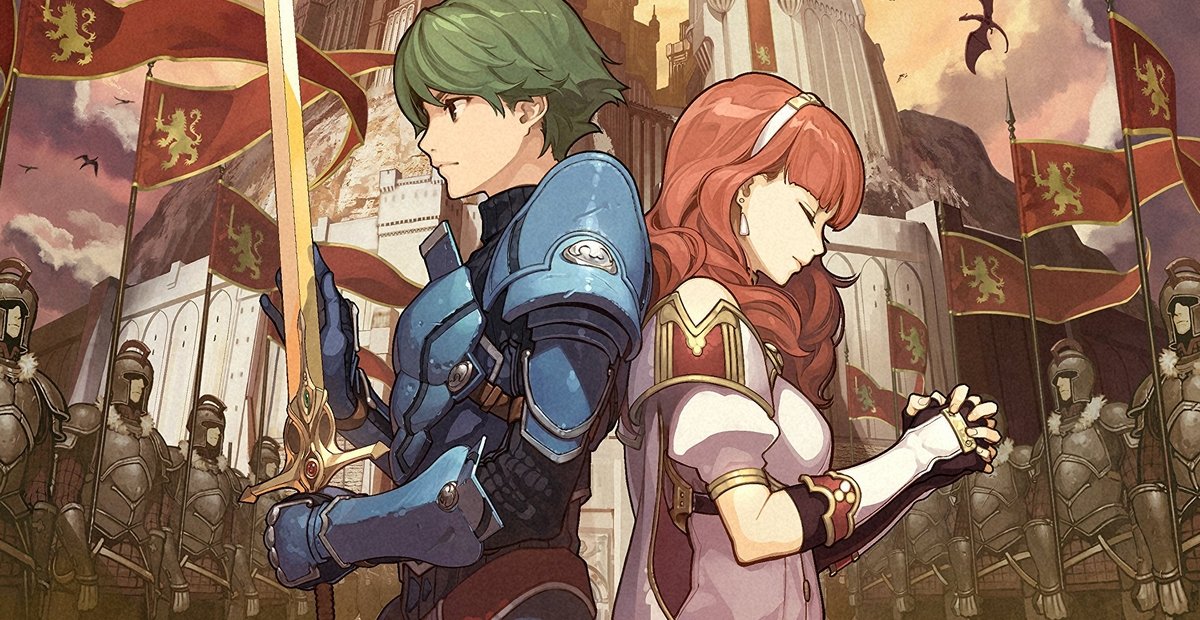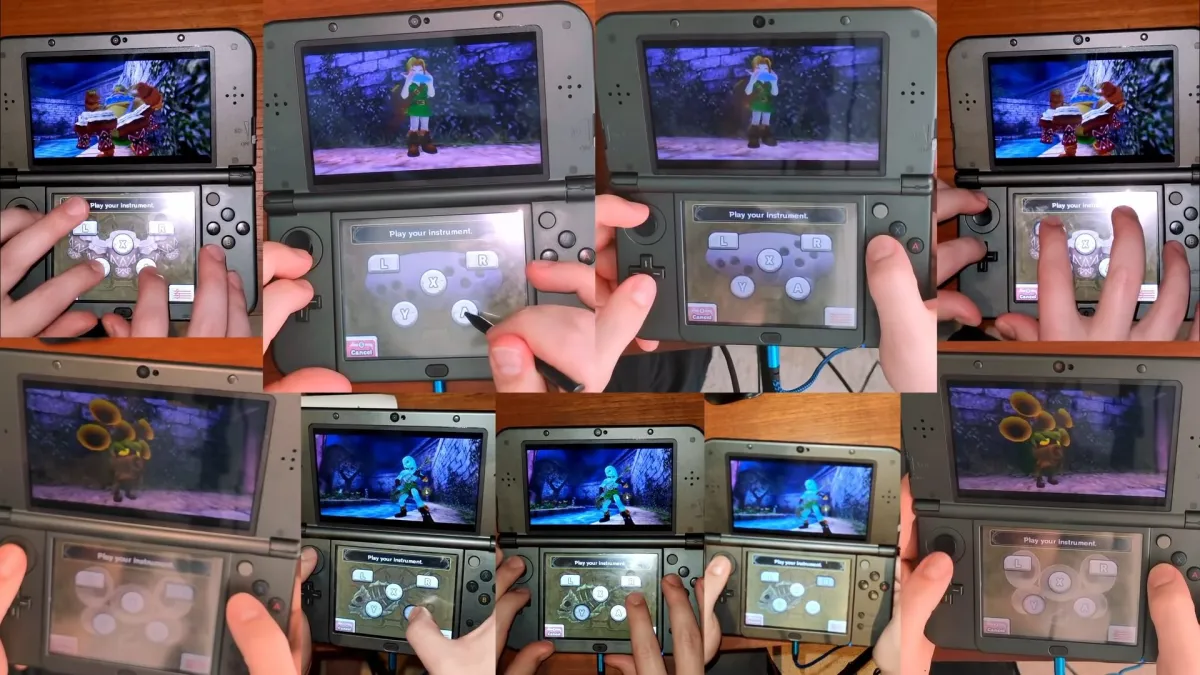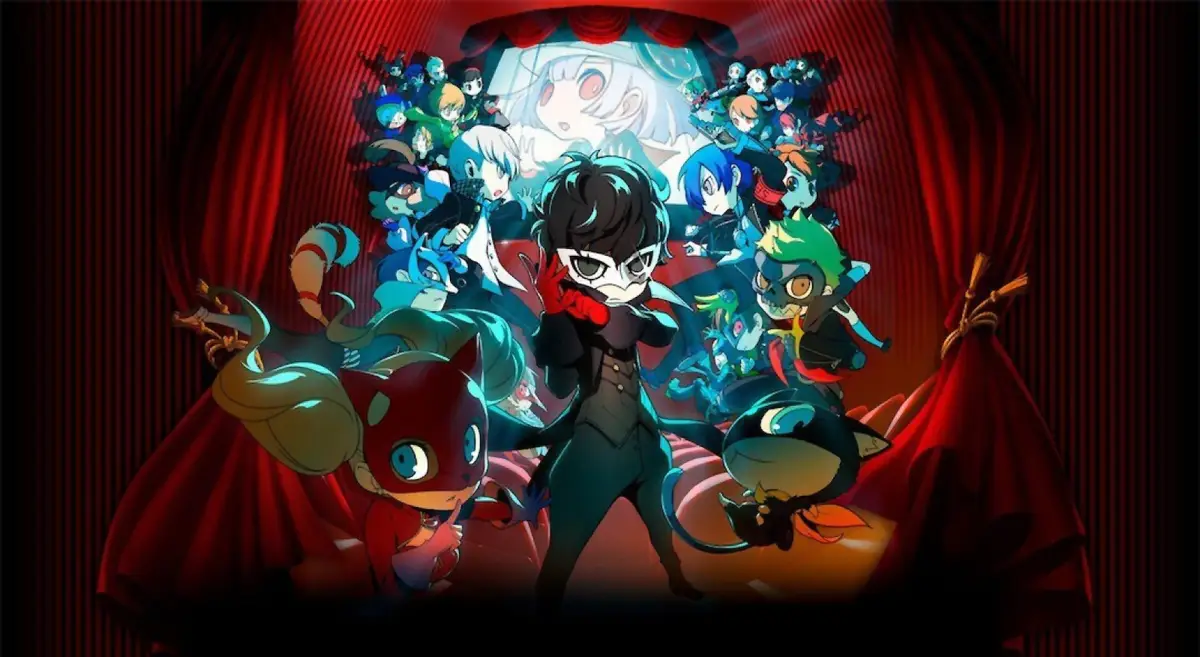A tale of souls and swords eternally retold
Fire Emblem. One of the most puzzling Nintendo franchises for sure. Most people’s first experience with the series was Super Smash Bros. Melee on the GameCube, which included Marth and Roy. Neither of their games released outside of Japan, so they were just cool and mysterious swordsmen to everyone. Indeed, the first worldwide release of a Fire Emblem title was Fire Emblem: Blazing Sword on the Game Boy Advance, two whole years after Melee! Since that time, however, nearly every entry has been localized and published worldwide.
Interest in the series has been on the rise, lately. Its two best selling entries are Fire Emblem Awakening and Fire Emblem Fates, both on 3DS, and the recent Fire Emblem Heroes on mobile has also been successful. A new entry is being developed for the Nintendo Switch, and Fire Emblem Warriors is also releasing soon on both Nintendo Switch and 3DS. There’s no denying that the franchise has come far since the mysterious Smash Bros. swordsmen days.
Despite this, it’s still far from being the most popular Nintendo franchise, nor the easiest to get into. So I figured I’d make a short and sweet guide about Fire Emblem, including recommended titles and a few tips. Hopefully you’ll try it out! There’s plenty of evil empires to vanquish and bandits to massacre ahead of you.
How do I play?
Fire Emblem is a turn-based strategy role-playing game (SRPG for short) series which sets itself apart with permanent death, random level-ups and dedicated battle screens with pretty combat animations. On your turn, you’re able to move and use an ability with every unit you control once, and then the enemy can do the same on their turn. This makes your turns particularly lengthy and strategic, and enemy turns long and stressful. An unlucky critical hit forcing you to lose a unit forever is never too far away.

Most actions you take with your units reward them with experience points. The amount of experience needed to level up is always 100 points, but the amount of experience you gain depends on your current level and class.
Weapon accuracy and damage is affected by what is known as the weapon triangle, introduced in the fourth game in the series. It is extremely arbitrary but helps every kind of unit shine against a specific kind of enemy. Swords are better against axes, axes win against lances, lances have the edge over swords… Of course, since most main characters in the series are too cool for school sword users, early enemies tend to be axe users with terrible accuracy. Outside of the weapon triangle, axes tend to be more powerful but less accurate, lances are average all around, and swords deal less damage but are very accurate. On top of this weapon triangle, there also exist other weapons like:
- Bows, which deal extra damage to flying units and can attack from a distance but usually aren’t able to attack at close range.
- Tomes, which deal ranged and melee damage based on enemy resistance instead of defense. This is particularly useful on armored enemies, but tome users tend to be frail.
- Staves, which are like tomes for healing!
- Ballistas, which are like bows except they can’t be moved around and they have insane range.
- Dances, which give another action to a unit that moved this turn. Very useful!
- Claws. They claw.

Since there’s a good use for every weapon, it’s generally a good idea to balance your units to include every kind. Archers do tend to be the weakest units overall, though, so don’t go around training ten of them at once.
As mentioned earlier, units are gone forever once they die (with exceptions), so you must be very careful not to overextend. You do tend to get a lot more units than you’ll ever use in these games, but it always sucks when you get very attached to a unit and they end up biting the dust. You can recruit some units from the enemy’s side by fulfilling some conditions like talking to them with a certain unit or finishing a chapter without killing them… So be on the lookout for enemy units with non-generic portraits.
To conclude this little gameplay overview, let’s talk about classes. There are typically three tiers of classes in Fire Emblem. Most characters start out as base classes, which can reach a maximum of 20 levels. Starting from level 10, these base classes can evolve to promoted forms. This comes with a healthy stat boost, a raise of each statistic’s cap and often the ability to wield an additional weapon type. Some units start as Trainees, that can evolve into base classes. They start off very weak, but with enough nurturing they can end up being some of the strongest units in your team.
Hurry up with the game suggestions already!
Alright, alright. While the series goes all the way back to the Famicom, you will see my suggestions will mainly follow recent entries, because improvements to the interface and the games’ speed are hard to ignore. Plus, newer entries are just easier to grab ahold of. These suggestions will be divided into three categories: The games which I feel are best to get a taste of the franchise, the games which are good for people who already have some sort of experience with the series, and finally titles that I recommend but should definitely wait until you already know what you’re getting into.
Recommended titles to get you started:

Name: Fire Emblem Awakening (Fire Emblem 13)
Platform: 3DS
Permadeath: Optional
Grinding outside arenas: Possible
Roughly 40 USD on Amazon and eShop
Noteworthy feature: French kissing.
Sometimes, 13 isn’t an unlucky number! Fire Emblem Awakening is a pretty obvious recommendation. A lot of elements in this game are designed for less experienced or more casual players, which make it the perfect pick for a first entry. One of these features, for example, is the ability to turn permanent death off. When Casual Mode is selected, characters that fall during battle return after the battle is over. That way, you can play with your favorite units without any worry of losing them forever. While this does make battles less intense, it’s entirely optional and could be a better fit for people starting out. It’s also possible to battle between chapters to increase your armies’ levels in case you’re struggling with a chapter. As such, it gives you the most tools to make the game easier if you want it to be.
Chapter objectives are also simplified. While the Fire Emblem series often has some stressful mission objectives that put pressure on the player (Escaping a map alive, surviving for a number of turns, defending non-playable units and the like), Fire Emblem Awakening cut them down to two basic objectives: Either a mission asked you to defeat every enemy, or to defeat a boss.

Awakening also focuses more on the relationship between characters. The ability for romance between units returns from Fire Emblem: Genealogy of the Holy War on the Super Famicom, this type explained by a time travel story instead of the natural passage of time. So if you’re into shipping, you’ll be delighted by the number of couples you’ll be able to create by leaving two units together on the battlefield. Their kids will join you in battle, and you can romance either the parents OR the kids with your own custom Avatar. Technology is so great you guys.
While some of these features, like creating your own avatar and casual mode, were actually introduced in the previous game in the franchise, that game never made it outside Japan. We’ll talk more about that one later. For now, all you need to know is that Awakening is a great game to get started.

Name: Fire Emblem: The Sacred Stones (Fire Emblem 8)
Platform: Game Boy Advance
Permadeath: Yes
Grinding outside arenas: Possible
eShop price: 8 USD on Wii U
Noteworthy feature: Multiplayer that completely strips away the whole tactical positioning concept.
This game is also a great way to get started for a beginner, even without Awakening‘s newer additions. Sure, mistakes aren’t as forgiving as in Awakening since there’s no way to turn off permanent death. But apart from that, it’s possible to roam the world map to fight between chapters, so you can grind away any roadblock. Your units are also really strong in The Sacred Stones, so the difficulty of each chapter is on the lower end in the series.
One thing I really liked about Sacred Stones is the use of monster units. When I saw still just a kid, fighting zombies and floating eyeballs was sooo cool. And the final boss, in particular, is a fantastic design in my opinion. These monster units make regular battles more interesting than the traditional bandits.

But I digress. The Sacred Stones keeps all the features from the two previous Game Boy Advance games, but the ability to grind and the stronger party units make it much better suited for a first game compared to the other Game Boy Advance titles. You can also choose between Ephraim and Eirika, the two siblings on the image above, as your main character. That’s always an appreciated feature!
Recommended titles once you already dipped your feet:

Name: Fire Emblem: The Blazing Sword (Fire Emblem, Fire Emblem 7)
Platform: Game Boy Advance
Permadeath: Yes
Grinding outside arenas: No
eShop price: 8 USD on Wii U
Noteworthy features: Being the first title released outside of Japan, threesome.
This game is great! If you’re still shaky on the fundamentals, or if it’s been a while since you played a game in this series, Fire Emblem: The Blazing Sword has pretty much the perfect balance. It walks you right through a rather lengthy tutorial to begin with, where you follow Lyn (green-haired gal on the wallpaper) who seeks to avenge the death of her tribe. It’s a very slow-paced and delicate introduction that makes sure you understand all the core gameplay concepts before going any further. One Lyn’s story is over, you can choose between Eliwood’s or Hector’s campaign, respectively the red-headed dad and the badass dude wielding an axe in the image above.
The game ramps up quite a bit in difficulty from that point onwards, especially if you play on Hard mode. Enemies are much more dangerous than in Sacred Stones, and you cannot grind between chapters to make your life easier. The only way to grind is to participate in the Arena during a chapter, which is very risky.

Fire Emblem: The Blazing Sword is technically a prequel to Fire Emblem: The Binding Blade, Roy’s game, also on the GBA. But there is absolutely no need to play that game first in order to appreciate this one. In fact, since Blazing Sword was the first Fire Emblem released outside of Japan, I can safely say most people who tried this game haven’t played The Binding Blade.
This one is a favorite for a lot of people, and I’m quite fond of it as well. But I’m not sure how much of that comes from nostalgia towards first entry you play in a series. If you tried this after Awakening or The Sacred Stones, I’m very interested to hear what you think about it.

Name: Fire Emblem Echoes: Shadows of Valentia (Fire Emblem 15)
Platform: Nintendo 3DS
Permadeath: Optional
Grinding outside arenas: Yes
Roughly 40 USD on Amazon and eShop
Noteworthy features: Fleshed out characters, strategic magic system, fucking cantors.
I love Fire Emblem Echoes: Shadows of Valentia. The effort put into this game goes far beyond being a mere remake with prettier graphics. It quickly became my favorite entry in the series since the Game Boy Advance and GameCube days. And yet, I wouldn’t recommend it as a first introduction to the series.
Why? Well, there are two main reasons. First, there are plenty of mechanics not found in other entries, or at least recent ones, which makes this unrepresentative of the whole. Magic spells cost health to cast, for example, and support conversations between units happen on the battlefield like the entries of yore.

On top of that, the game is more challenging than your average Fire Emblem! Encounters that ambush you on the first turn or use Cantors to flood the battlefield with summoned enemies can really hurt your army. Thankfully, Shadows of Valentia adds convenience features that make this challenge easier to handle for people of all skill levels. For starters, you’re equipped with an item called Mila’s turnwheel that allows you to rewind a few turns, particularly useful when you lose one of your favorite units. A few life fountains can be found in the world, and they allow you to revive a fallen ally. And, should you prefer playing that way, casual mode also returns. This allows you to disable character death entirely.
Beyond the gameplay, I cannot praise Shadows of Valentia as a whole package enough. Character portraits by Atelier artist Hidari are bursting with personality, and the music is as catchy as back in the Famicom days while being a lot more complex. And the writing! There’s a passion burning in each character that’s difficult to put into words. This clip of what happens if a certain character dies is a good example.
Recommended titles once your hunger knows no bounds:

Name: Fire Emblem: Path of Radiance (Fire Emblem 9)
Platform: Nintendo GameCube
Permadeath: Yes
Grinding outside arenas: No
Very expensive online, eBay or Craigslist might help
Noteworthy features: Fantasy racism.
Path of Radiance is possibly my favorite entry in the franchise, thanks to its fun cast and interesting story, but make no mistake! This game is the most challenging listed so far. Encounters are generally more difficult, and there is also a new mechanic to take into account called Biorhythms. As you progress through combat and battles, characters will have ups and downs in a cycle, which impacts accuracy and the ability to dodge attacks. You’ll want to take that into account and make sure to use units while they’re feeling good as much as possible.

Like The Blazing Blade, Path of Radiance lacks the ability to grind skirmishes, and the permanent loss of allies might prove to be too much for first-time players. Once you have some experience under your belt, however, there is a greatly satisfying SRPG to experience here, which I wholeheartedly recommend.

Name: Fire Emblem: Genealogy of the Holy War (Fire Emblem 4)
Platform: Super Famicom
Permadeath: Yes
Grinding outside arenas: No
Noteworthy feature: Invented the weapon triangle. Invented having sex.
Official English release: None
Genealogy of the Holy War is a very important milestone in the series. It’s the first with the weapon triangle, which added a lot to the game’s depth (even if it’s a bit nonsensical). It’s also a big, sprawling adventure. The game’s war takes place over two generations, hence the title. For the first time in the series, you can hook up characters together, a concept that would eventually make a return in Awakening and Fates. This affects the second generation, so it’s worth messing with. If you don’t bother with it, that’s fine too! Substitute party members will appear instead of the kids, so you’re never screwed over by this system.
The maps in this game tend to be huuuuuuuge. You need to travel over huge areas and capture multiple objectives per chapter. And while it’s definitely a faster game compared to the Famicom games, the animations and interface are just not quite to the level of GBA entries and onwards. It’s definitely the slowest game in this recommendation list, so you better be patient. It still has a special place in my heart for being so important to the series, and for kindling my love for barbecue!

Unfortunately, there’s no official English release of this game, so you’ll have to hunt a translation online if you want to play it. Don’t lose hope, though! The first three games in the franchise already have remakes, so remaking the fourth game is a no brainer! We might get a translated version of this game before long.

Name: Fire Emblem: New Mystery of the Emblem: Heroes of Light and Shadow (Fire Emblem 12)
Platform: DS
Permadeath: Optional
Grinding outside arenas: You can access the arena between chapters, so kind of?
Noteworthy features: Introduced the self-insert and Casual Mode. Ridiculously long title.
Official English release: None
This game came out after the black sheep of the series, Shadow Dragon, and wasn’t even released in the west. It features the same awkward art style as Shadow Dragon too. And yet, I really do like it. It’s a remake of the second part of Fire Emblem: Mystery of the Emblem on the Super Famicom with a lot of improvements. There are a lot more units to recruit, allowing you to have a much more balanced team overall since that game was all over the place. You can create your own unit in this game, like in Awakening and Fates. This remake also adds chapters that focus on your Avatar and a group of assassins sent after Marth. If you prefer playing without permanent death, you can also turn it off for the first time in the series!
The ability to reclass any class into any other for free allows you to customize your army just the way you want it. If you want to change your armored soldier into a frail mage, you can! You can be as ridiculous or strategic as you want. You can also forge better weapons and give them a name. You could totally self-insert as King Arthur wielding Excalibur!

Got’em
The game is fairly challenging. Hard Classic is enough to take series veterans for a ride. Enemy stats aren’t insurmountable, but you don’t have a lot of breathing room. Reinforcements can also make your day a lot worse, and there are plenty of them! So even if you’re experienced with the series, I don’t suggest playing above Hard without a guide… Unless you crave punishment, you sicko.
Unfortunately, this game hasn’t been officially released outside Japan, so you’ll have to hunt down a translation online. Come on, Nintendo! If not for this game, you would have a perfect localization streak between Game Boy Advance and 3DS entries.
Cool, alright. Got any hot tips?
Sure!
- For starters, once you get a unit of the Dancer or Bard class, you want to make them a permanent member of your team. The ability to give another action to the unit that needs it most is invaluable, and can really make the difference in a dangerous situation. You can attack twice with a powerful character. You can attack with a close ranged character, give that unit another action and escape with it leaving the spot open for someone else to attack. You can heal two characters with a single healer. The possibilities are endless.
- Attacking on your turn can be risky. It’s often a good idea to position yourself and let yourself be attacked by enemies instead. Let’s say two players are playing the same chapter with identical units. Player A attacks on their turn, while Player B lets the enemy attack first. The enemy unit has 20 HP, the player’s unit has 22 HP, and both units deal 12 damage. After the first round of combat the enemy unit has 8 HP and their own unit has 10 HP. This is the same for both players. But player A can be attacked by the enemy unit on its phase and lose their character, while player B has the opportunity to strike first and win combat. Or, at the very least, escape and heal. See how much safer it can be to let enemies attack you when you’re not guaranteed to get a kill?
- Don’t be afraid to use promoted units! Fire Emblem games often start you off with a strong unit that gains a lot less experience than other units and has shittier level-ups, and a typical reflex is to hide them in a corner of the map to make sure they’ll never steal precious experience points. The thing, though, is that you’re pretty much guaranteed to waste experience on units you won’t use by the end game anyway, and you can use these stronger units as shields for weaker units until they can level up. Why not let them catch a grenade for you? Throw their heads on a blade for you? Jump in front of a train for you? You know they’d do anything for you!
- Take decisions while keeping in mind the worst case scenario. Are you really willing to take a 45% chance that the unit you want to train dies? Maybe it’s a better idea to let a stronger unit take care of this one. You can make bold decisions if you’re pushed against the wall, but there are a lot of opportunities to train every kind of unit. Close ranged units can kill squishy characters like mages or especially archers, long range characters can wait until an enemy is close to death and finish them off without ever being in danger.
- Enemies that can attack at least one character will always move and attack this turn unless they’re unable to move in general. It’s a good idea to check the reach (or Danger Zone) of the enemy team. If you can move into the range of a single unit while the other sides are safe, you can throw a character that’s good against that enemy on that spot for an easy victory.
By now you should be more than ready to face whatever’s in your way. Of course, if you have any personal experience with these games to share or questions about a specific entry, I’ll be happy to hear it! For now, folks, I’ll just go back to wishing for a new Final Fantasy Tactics.




